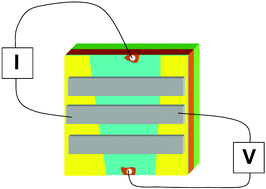Solution deposition of ultrathin zirconia films on YBa2Cu3O7−δ by molecular layering of tetra-n-propyl zirconate†
Abstract
Ultrathin (<10 nm)

- This article is part of the themed collection: From Molecules to Materials: Materials Discussion 7

 Please wait while we load your content...
Please wait while we load your content...